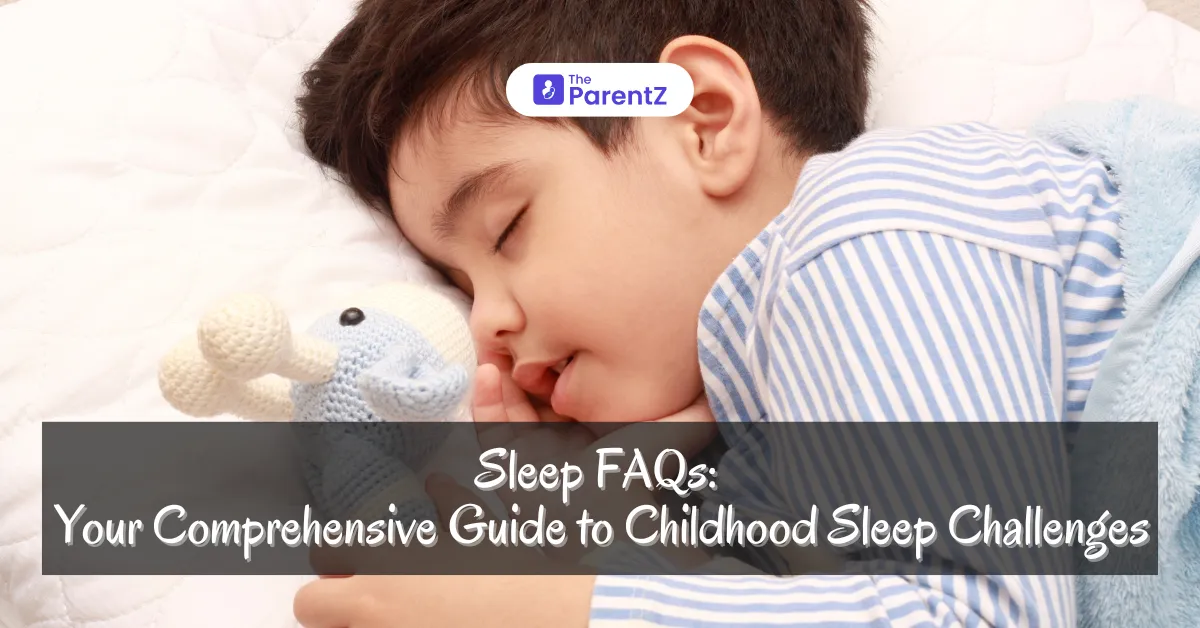Let's be honest—sleep can feel like the greatest parenting puzzle. Just when you think you've got it figured out, your kid throws you a curveball that leaves you wide awake (and not in a good way). Today, we're here to tackle those burning questions that keep many parents up at night - literally and figuratively!
How Much Sleep Does My Child Really Need?
Sleep needs vary dramatically as children grow, and it's not just about quantity, but quality too. Here's a quick breakdown that might save your sanity:
Newborns (0-3 months)
- Total sleep: 14-17 hours per day
- No real day/night distinction yet
- Expect frequent, short sleep cycles
Infants (4-12 months)
- Total sleep: 12-16 hours per day
- Typically, 2-3 naps during the day
- Nighttime sleep starts becoming more consolidated
- By 6 months, many babies can sleep 6-8 hours straight
Toddlers (1-3 years)
- Total sleep: 11-14 hours per day
- One afternoon nap
- Bedtime routine becomes crucial
- They're developing real sleep patterns but also testing boundaries
Preschoolers (3-5 years)
- Total sleep: 10-13 hours per day
- Naps start to phase out
- Bedtime becomes more negotiable (cue dramatic performances)
School-age Children (6-12 years)
- Total sleep: 9-12 hours per day
- No more naps
- Sleep becomes more adult-like
Teenagers (13-18 years)
- Total sleep: 8-10 hours per day
- A biological sleep shift occurs
- The natural tendency to go to bed later and wake up later
- Hormonal changes dramatically impact sleep cycles
- Academic stress, social media, and extracurricular activities compete for sleep time
- Chronic sleep deprivation becomes a significant concern
Pro tip: These are guidelines, not rigid rules
What If My Child Refuses to Sleep?
The classic bedtime battle. Here are some strategies that might just save your evening:
- Consistent Routine is King: Create a predictable wind-down sequence. Bath, story, cuddle, bed. Make it sacred. Children thrive on predictability, even if they protest.
- Make Bedtime Attractive: Transform the bedroom into a sleep sanctuary. Special nightlight? Cozy blanket? Favorite stuffed animal? These can be powerful sleep allies.
- Gradual Withdrawal: If your child struggles with separation, start by sitting near the bed, then gradually move further away over successive nights.
- Positive Reinforcement: Create a reward system. Sticker charts can work magic! Celebrate good sleep behaviors.
- Limit Screen Time: Reduce exposure to screens at least an hour before bed. The blue light interferes with the production of melatonin, the hormone that regulates sleep.
How to Handle Midnight Wakings?
Midnight wakings are frustrating for both parents and children. Here are some tips on how to handle them:
- Stay Calm and Quiet: When your child wakes up at night, respond calmly without turning on bright lights or engaging in stimulating conversation.
- Check Their Needs: Sometimes, children wake up because they are hungry, uncomfortable, or need a diaper change. Address these needs quickly and quietly.
- Encourage Self-Soothing: If your child is old enough, encourage them to try to fall back asleep on their own before intervening.
- Keep Nighttime Interactions Brief: If you need to comfort your child, keep it short and sweet—just enough to reassure them without fully waking them up.
- Evaluate Sleep Environment: Ensure that their sleeping environment is safe and comfortable; sometimes, adjusting the room temperature or noise levels can help.
Should I Let My Child Sleep in Our Bed?
The co-sleeping debate is more nuanced than you might think. Here's a balanced perspective:
Pros of Co-Sleeping
- Easier nighttime feeding
- Increased bonding
- Potentially less stressful for some families
Cons of Co-Sleeping
- Potential sleep disruption for parents
- Harder to establish independent sleep
- Safety concerns with very young infants
This topic often sparks debate among parents. Here are some considerations:
- Safety First: If you choose to co-sleep, make sure that the sleeping environment is safe—avoid soft bedding and ensure that the baby cannot fall out of bed.
- Family Dynamics: Consider how co-sleeping affects your relationship with your partner and whether it fits your family’s lifestyle.
- Transitioning Out: If you start with co-sleeping but want your child to eventually sleep independently, be prepared for some challenges during the transition period.
- Individual Choice: Ultimately, whether or not to co-sleep is a personal choice based on what works best for your family dynamics and your child's needs.
How to Manage Sleep During Illness?
When children are sick, their sleep patterns are disrupted. Here’s how to manage sleep during these times:
- Monitor Symptoms: Keep an eye on their symptoms and seek medical advice if needed. Sometimes, medication can help relieve discomfort and promote better sleep.
- Comfort Measures: Offer comfort through cuddles or soothing words; sometimes, just being close helps them feel more secure.
- Adjust Bedtime Routines: Be flexible with bedtime routines when they’re unwell; they may need extra time or different comfort measures.
- Maintain Comfort in Sleep Environment: Make sure that they have access to water and are comfortable in their sleeping environment; sometimes, adding extra pillows or blankets can help them feel better.
- Rest is Key: Encourage plenty of rest during illness; it’s important for recovery.
Practical Tips
- Elevate head slightly for congestion
- Use humidifiers
- Maintain hydration
- Gentle, comfort-focused approach
When to Seek Medical Advice?
- Persistent high fever
- Unusual breathing patterns
- Extreme lethargy
- Significant changes in sleep behavior
Conclusion
Remember, there's no perfect blueprint for childhood sleep. What works for one child might be a complete disaster for another. The key is patience, consistency, and flexibility.
Your child's sleep will evolve. Some nights will feel like a dream, others like a nightmare. But you've got this! Trust your instincts, be kind to yourself, and know that this phase will pass.
Sweet dreams (hopefully for everyone)!








Be the first one to comment on this story.